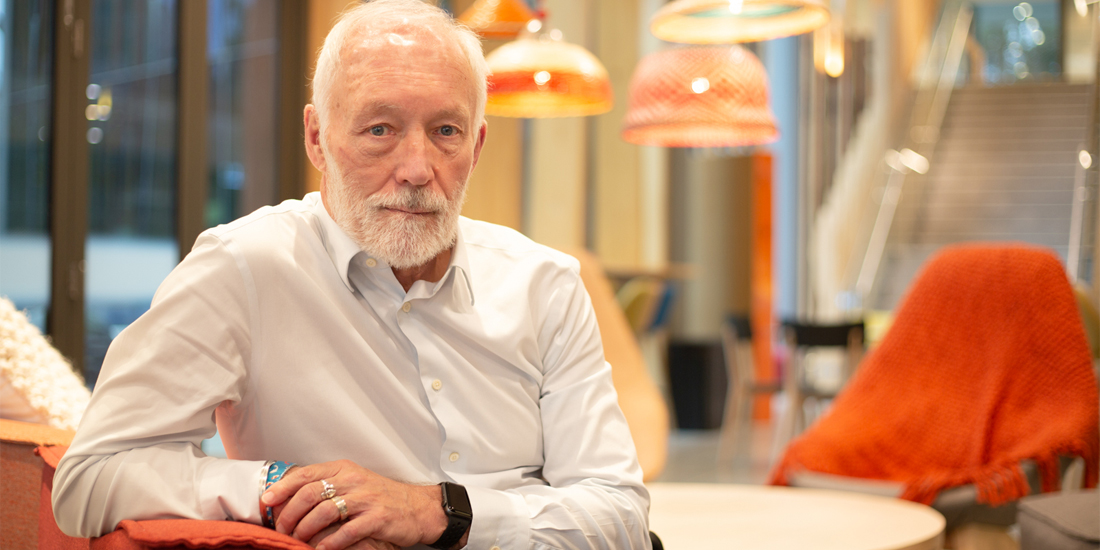
This op-ed was first published in The Australian, 29 June 2020.
Written by Professor Patrick McGorry, executive director of Orygen.
As the pandemic rolls on, the personal experiences of Australians and a surge of data on mental health and the social and economic impacts of the global crisis are revealing the extent of the next wave that we as a nation must confront. It is fascinating to observe that the threat posed by mental ill-health follows a very similar pattern to that posed by the COVID-19 virus itself.
The majority of the population exposed to the virus will be asymptomatic or suffer only mild symptoms for which health and medical care will not be necessary. A substantial minority, however, will develop a more serious illness for which medical care is necessary. An even smaller subset will develop serious, perhaps life-threatening illness for which expert and intensive care is essential to improve the chances of survival.
In the case of mental health, the whole population has been exposed to the harmful mental impacts of the pandemic to some degree and this will result for the majority in a relatively mild to moderate level of anxiety and stress for which support, self-help and the passage of time are all that is necessary. However, a substantial minority of Australians will develop a new episode of mental ill-health to a degree that justifies and requires professional help.
This will be at a level substantially higher than under normal conditions and is made up of two groups: people who have been previously well but carry a vulnerability to mental ill-health from a variety of well-known sources; and people who have an existing mental illness, which is in remission or which is persistent and already active. The same kind of scientific modelling used to predict the infection curves for the pandemic under various conditions can be used to predict the shape and duration of the curve for increased mental ill-health.
This has been done and it accords well with what we have seen in previous disasters and economic crashes. It also accords well with the data emerging from a range of national surveys. The consensus is we are seeing a rise in need for care of about 20-30 per cent with higher and lower rates in different age groups and communities, related to risk, disadvantage and other variables. There is great concern in the community about this because we know from the Productivity Commission and the Victorian royal commission evidence and interim reports that the mental health system was already struggling to meet demand before the pandemic. As with the first wave of the pandemic, lives are at stake here too as suicide is predicted to rise sharply as mental health and wellbeing suffers. Described by Harvard Global Health Institute expert Professor Vikram Patel as a “perfect storm”, this is clearly a health challenge from which we cannot hide.
Fortunately, our federal and some state governments have recognised the danger and taken positive initial steps to counter it. A strong message to seek help if unwell or struggling was backed up by increased resources for help and crisis lines that have seen a surge in demand. Funding for some high-risk groups, older Australians and culturally and linguistically diverse communities then followed, along with early release of wait-list funding for headspace centres. And national cabinet also approved a promising pandemic mental health plan, which contained some positive solutions for the next phase.
But on present indications, as the pandemic endures and the economy heads towards the fiscal cliff, the storm is shaping as a category 5. So, what must we do next?
There are two major fronts of this fight; prevention and treatment or care. Prevention is naturally better than cure and we should do our best to mitigate the risks driving the storm and try to downgrade it to a category 3 or 4, so things are more manageable. This would equate to “flattening the curve” in pandemic terms. So, improving the level of support for isolated groups of people, reducing consumption of alcohol and drugs, extending the welfare support of JobSeeker and JobKeeper to high-risk groups such as young people, women and older workers, and offering pre-emptive outreach care for people with established mental illness who are presently well to avoid relapse.
Regarding care, even before COVID-19, Australia was faced with the imperative of once-in-a-generation reform of mental healthcare brought on by the erosion over 25 years of the deinstitutionalised but underfunded system. While the federal government had begun to build a better base camp from the primary care end, the gap between this and hospital-centric state government services remains extremely wide and fails to care for more than a million Australians every year. So COVID-19 presents us with an opportunity to fast-track this reform process, spurred on by the hard evidence assembled by serious inquiries at state and federal levels. We have leaders in Scott Morrison, Greg Hunt, Daniel Andrews, Gladys Berejiklian and others who are sensitive to this issue and have already made positive responses. It would be welcome and inspiring in these difficult times to see rapid progress on accessible, comprehensive local community mental health platforms, championed by Hunt — assertive community outreach care so people can receive compassionate and expert support in their own homes, more specialised and sustained back-up care for all headspace centres, and full integration of telehealth and digital mental health with face-to-face care. These are some of the shovel-ready reforms which are supported by scientific evidence and which could ultimately transform the face of mental healthcare and flatten the next wave.